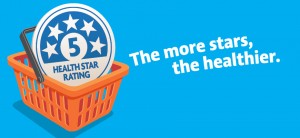Dietary Guides are still not helpful
Health authorities in NZ keep wringing their hands and admonishing us about our increasing obesity rates and the associated increase in the incidence of type 2 diabetes and other ills.
I believe that these authorities themselves in their muddled confusion around the subject and the influence from self- interested corporates are actually contributors to the problem rather than helpful advisers.
This was yet again borne out by an article about NZ’s foods star system in the 26 July 2015 Sunday Star Times. The system is intended to help shoppers make healthier choices about processed food products by labelling them with stars so comparisons can be made with other products. The system is intended to rate products within the same category but appears to take no consideration of the fact that an unhealthy food that is slightly less so than a similar food is still an unhealthy food. Plus of course if you are creating a concept that the more stars the better people are going to be confused by a high rated item in the junk category getting more stars that a medium rated food in a healthy category.
This resulted in examples that the Sunday Star Times article pointed out e.g oven baked potato chips rated above apples and pizza above yoghurt. It also pointed out that some junk food looks really healthy with KFC original recipe chicken getting 3.5 stars and their chips a halo polishing 4.5 stars so the suggestion is they would be a better snack than a cup of tea and a plain scone with only 2 stars. You could of course do a bit better by their system choosing a cappuccino and a blueberry muffin and to score 2.5 stars. Despite these and other obvious anomalies a spokesman for the Ministry for Primary Industries said the system was simple “The more stars, the healthier the choice.” I would contend that unfortunately for the above given reasons this is simply not so.
A supporter of the system is Sue Pollard from The NZ Nutrition Foundation. This confirms to me commercial influence in the reasoning behind the system. The last I heard of this organisation is when they toured NZ lecturing to dieticians about the dangers of so called “low” carbohydrate diets, especially the Zone. The tour was sponsored by Kelloggs, Tip Top bread and Chelsea sugar and there were free samples of some of the sponsors products given away at the meetings. Although highly critical of the Zone most speakers appeared to have little concept of it, one called it “Dr Atkin’s Zone.” The speaker from Chelsea sugar recommended consuming 15 teaspoons of sugar a day.
The commercial link is further reinforced by the fact that there are over 70 different cereals from Kellogg’s, Sanitarium and Hubbards that rate 4 stars or higher. I would venture to suggest that looking at the glycaemic index and load along with inherent nutrients (rather than artificially added) in these products most should be condemned to a newly created Eat a Little Occasionally category rather than trying to suggest that there is anything “healthy” about them.
Contributed by Kevin Bateman

